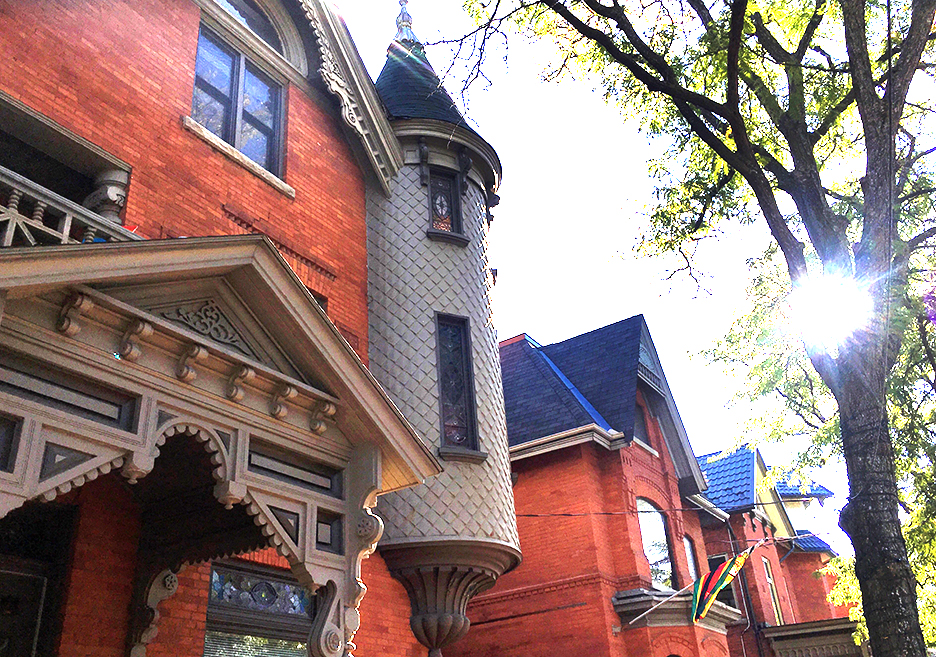Ottawa Heritage Register eyes Centretown buildings
By Kelly Millar
Centretown will be next to go under the city’s microscope in the search for buildings to be added to the Ottawa Heritage Register.
The city recently identified more than 300 homes in Old Ottawa South and Old Ottawa East that will be added to the list as part of an ongoing city heritage project.
“There was an initiative that city council approved at the start of the term to undertake this project, so people were hired, the app was developed and the work is ongoing,” said Sally Coutts, coordinator of the city’s heritage services.
The project is a strategic initiative scheduled to unfold over three years, finishing in 2018. The city is currently working through properties in the Glebe and the Centretown study is likely to begin this winter.
The goal is to ensure that the city’s inventory of heritage resources is as comprehensive and up-to-date as possible, creating more certainty for stakeholders such as property owners and developers.
The app developed by the city is meant to assist in sorting through which buildings should be added to the register. The app uses GIS technology to locate and identify buildings, assessing their contribution to the historic fabric of their neighbourhoods. Buildings are considered worthy of listing if they reflect the history of the area or have significant architectural features.
These broad criteria can result in a heritage listing for properties ranging widely from old stone churches to simple family homes.
Some Centretown buildings currently on the register include the Lisgar Collegiate Institute, St. Andrew’s Presbyterian Church and the former Bank of Montreal (currently attached to Massine’s Your Independent Grocer).
“It allows municipalities to include buildings of cultural heritage value on a list and if you’re on it you’re required to give 60 days’ notice if you intend to demolish a building,” said Coutts.
A property being listed on the register does not make it a designated heritage building under the Ontario Heritage Act. The register is not to be considered a “stepping stone” to designation, as buildings included on it may not meet the criteria for individual designation, as explained in a report prepared by city heritage researchers Ashley Kotarba and David Maloney.
The only legal implication of being on the register is the two-months’ notice required before demolition.
However, some critics have been voicing their concerns about the process at public meetings and through written objections about their homes being added to the list. Some homeowners have requesting removal of their properties from the register.
“Everyone who asked to be taken off the list was taken off, at least temporarily. They’re going to go through a more in-depth discussion with city staff about their particular property,” said Coun. Rick Chiarelli.
Concerns being raised include possible restrictions on owners’ future development plans for their property, and the possible reduction in the value of a listed property.
“Their argument was solid and although being on the register doesn’t mean they’re going to be a designated heritage property, it creates the impression that they might be,” said Chiarelli. “That is enough in the market to create some purchaser chill.”
Chiarelli was one of two councillors who dissented from a vote regarding the 358 Old Ottawa South and Old Ottawa East properties being added to the register.
“It’s unfair to property owners to put this cloud over their properties for no real gain,” said Chiarelli. “It’s not the Academy Awards — there’s nothing good about being a nominee.”
City staff wanted to impress upon council that despite the perceptions, these steps need to be taken.
“It’s a public process and people are allowed to comment,” said Coutts.
Coutts says the register is actually helpful when it comes to developing and using a property.
“If developers and architects are thinking about a project they will be able to know whether a building has cultural heritage value or not,” she said. “The public will also have a better idea of the important buildings in their neighbourhood.”
Centretown and other older neighbourhoods in the city already have general heritage district designations that guide property development applications and the evolution of overall community character.
The City of Ottawa’s interactive map highlights what types of buildings are of value in the municipality. The intended outcome of the ongoing project is a more comprehensive, easily accessible, online map-based inventory of Ottawa’s heritage resources.

